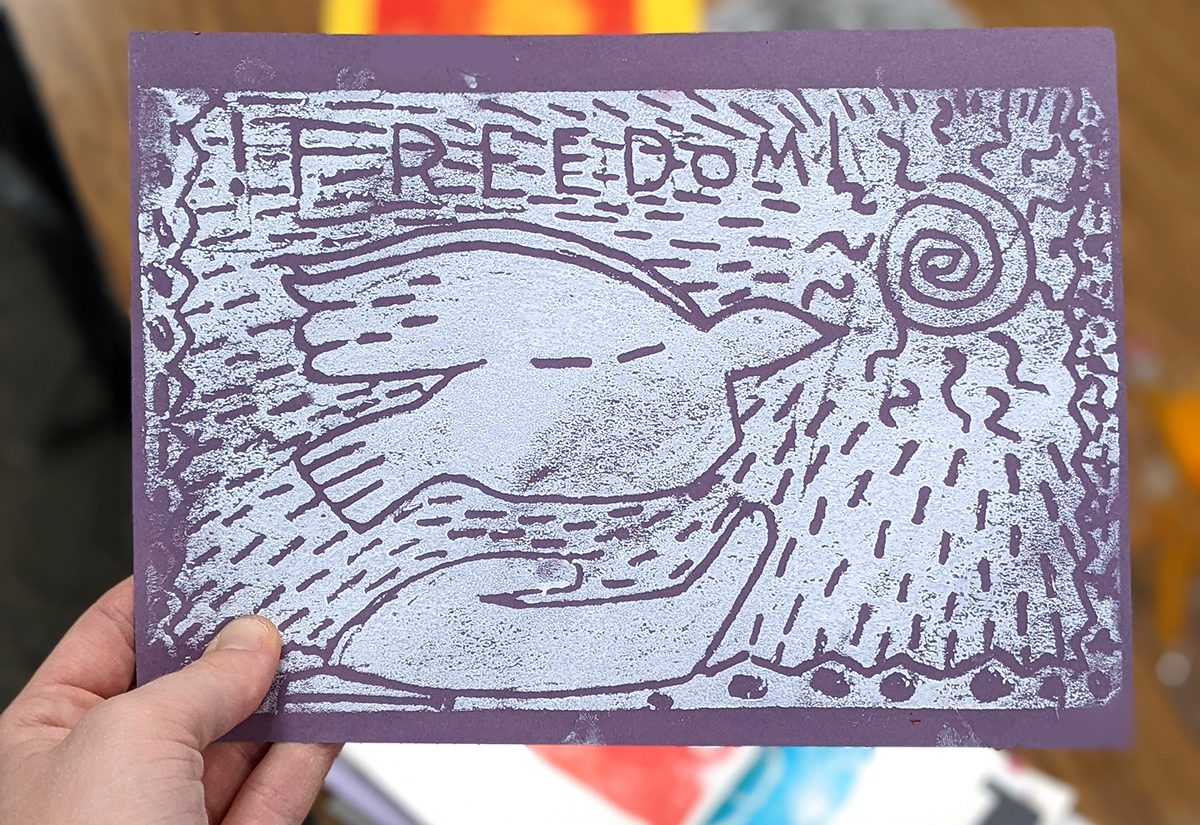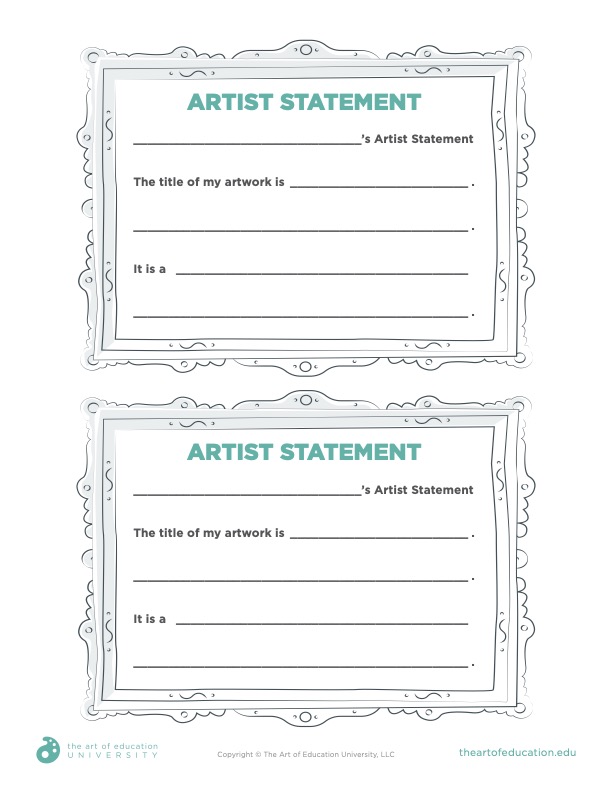Can art teachers confidently incorporate creative writing into lessons? Is there space for writing in the art room? Can handwriting turn into artwork? The answer to all these questions is—yes! Incorporating writing into the artmaking process will benefit your students’ learning regardless of age or grade level. Students can discover a love for creative writing and gain confidence in their literacy skills. You can help them improve their writing skills, make bigger connections, and formulate new ideas. Get your students writing in the art room with these five engaging art activities.
These five quick ideas will show you how to incorporate writing into artwork and improve students’ writing skills.
These art and writing activities are appropriate for 4th, 5th, and 6th grade, but you can adjust them for younger and older artists. The ideas allow students to use their imaginations and get creative with their writing and art.
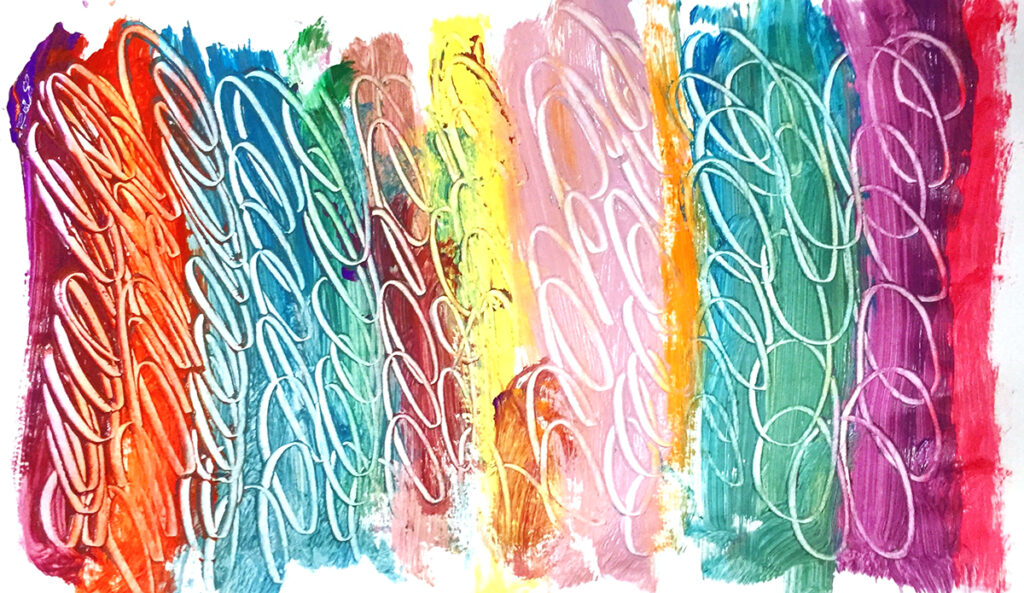
1. Turn handwriting into art (Grades 3–6).
Students can incorporate their handwriting into a final art piece. This idea comes from the work of the artist Cy Twombly. Twombly was an Abstract Expressionist who used writing and language in his artwork. His abstract paintings often showcase poetry, scribbles, and distinctive lines inspired by handwriting.
Select a specific theme, such as school, community, art, positivity, connection, or friendship, and help students generate a list of related words. Students select one word and handwrite it several times to create a pattern. Paint over the text with translucent watercolors or thinned tempera paints. To finish, trace the text with oil pastels, pen and ink, or markers.
2. Create your own Pokémon® Card (Grades 4–6)!
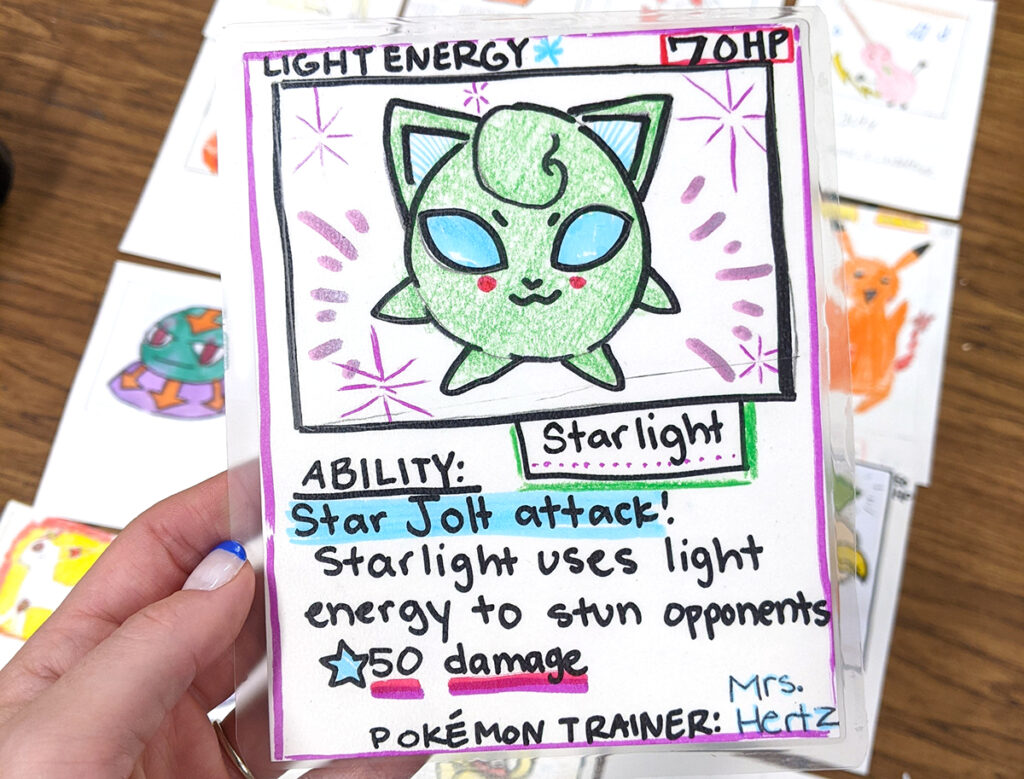
For this lesson, students design and illustrate an original Pokémon character. Their card will include a visual image as well as a written description of abilities and animal information. Students go wild over this assignment! You can even make more interdisciplinary connections if you bring in science with types of energy and animal habitats.
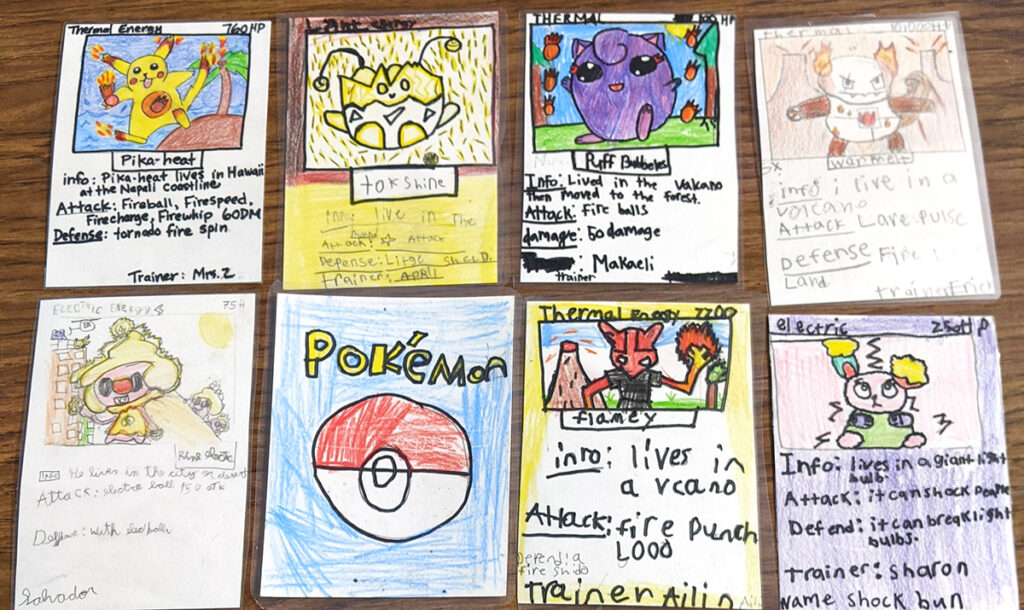
3. Provide quick writing prompts.
Are you unable to spare valuable class time for lots of writing? No need to worry! You don’t have to design an entire lesson plan centered on writing. Check out Literacy through Storytelling, a Collection in FLEX Curriculum full of strategies for writing integration. The Mini Artist Statement is a fabulous student-facing resource in this Collection that scaffolds the reflective writing process. You can also do a deeper dive into writing with these prompts. For even more tips, check out the article, 3 Stress-Free Ways to Bring Writing Into Your Art Room.
4. Design a print (Grades 4–6).
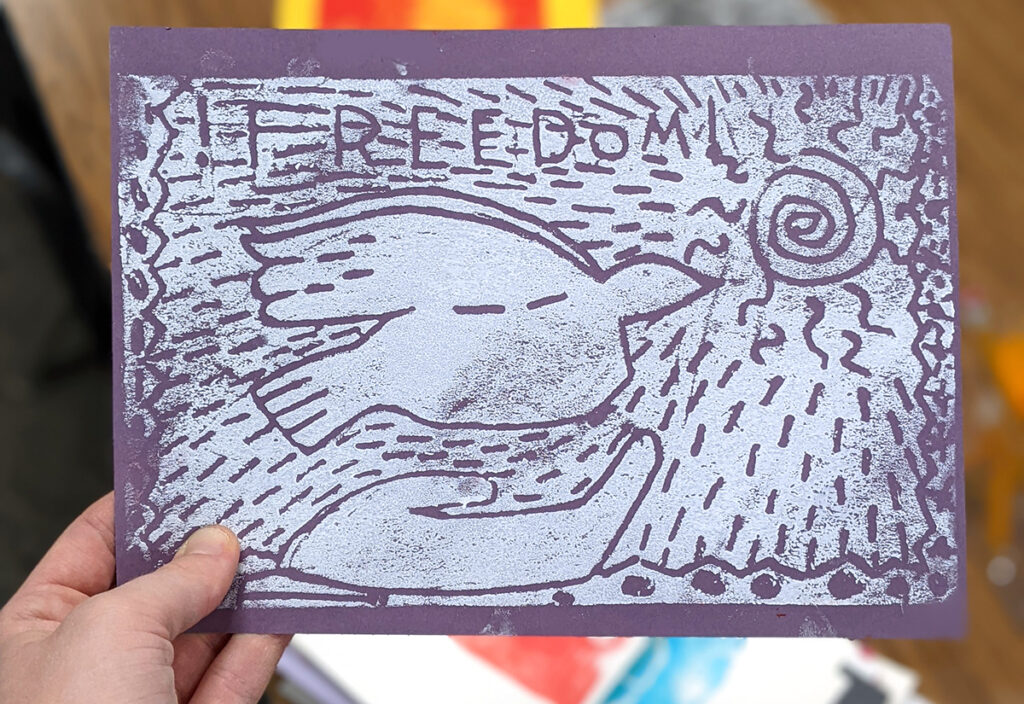
This interactive printmaking activity is a sure bet to get your students excited about the power of text. Show video clips and/or provide written excerpts of famous speeches throughout history. Facilitate a class discussion about specific words or phrases that capture the essence of the selected speech. Students carve a word or short phrase into their printing plate and create a series of prints using different colors. Discuss how color can impact the word or phrase.
This lesson is another opportunity to make interdisciplinary ties. You can highlight historical connections by researching influential leaders and speakers from the past and present to show to your students. Check out the Lesson, Printmaking to Convey a Message in FLEX Curriculum for more ideas and resources!
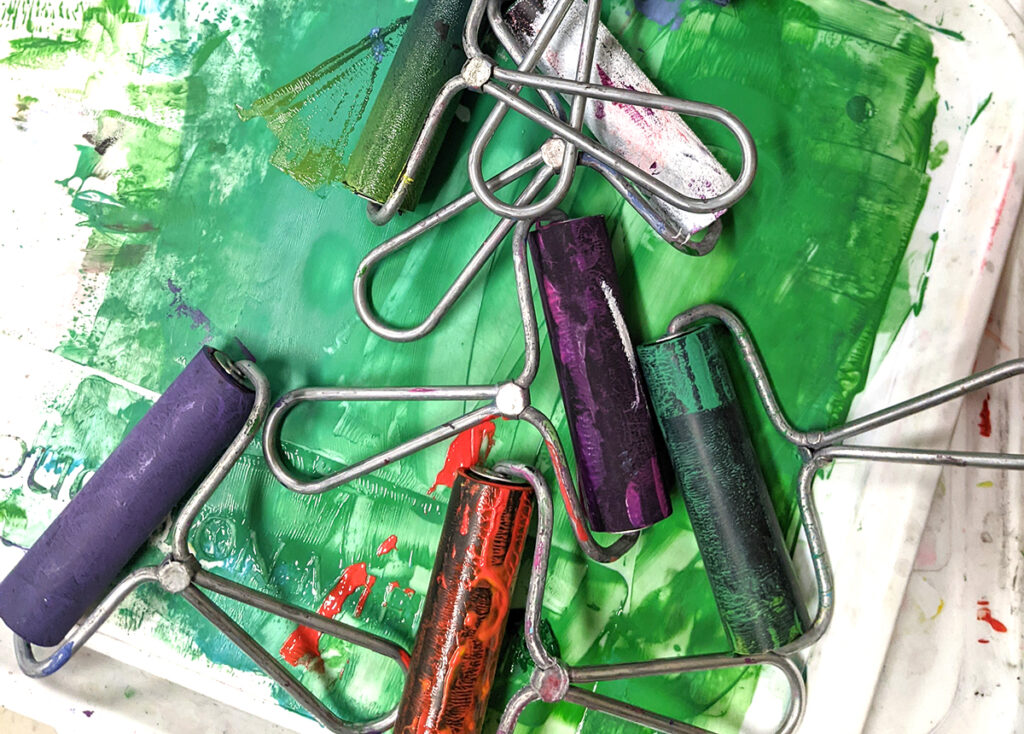
5. Illustrate a storyboard (Grades 4–6).
Students love to write and illustrate a story. This activity will help your students express storytelling ideas visually. And the best part is that the sky’s the limit! You can choose a fairytale, a folk tale, or any creative writing piece. Take this opportunity to collaborate with their classroom teacher to find out what students are reading in their ELA curriculum, and challenge them to illustrate part of the story or even create a sequel.
Assign each student a section of the story. Discuss and show examples of how to illustrate words, scenes, action, and mood. Students draw images to illustrate their sections of the story and assemble the pages to form a storybook. Read the story as a class, holding up the students’ illustrations for all to see!
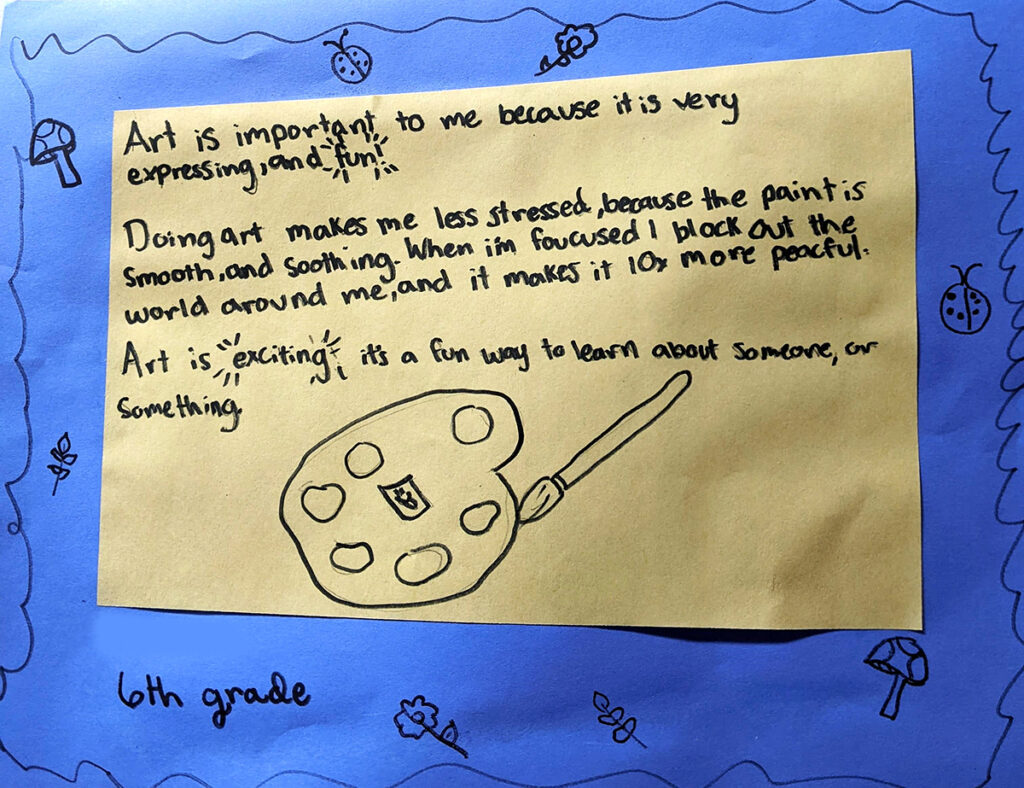
Implementing writing into the artmaking process is fun and engaging. We can use art to improve students’ writing skills by incorporating literacy into art lessons. Students can expand their vocabulary, improve communication, and practice writing. Additionally, they will make connections between art, history, and literacy. Use these lesson ideas to challenge your students to harness the power of words in their art!
How will you adapt your art projects to incorporate writing?
What literacy skills do you want to focus on improving this year?
What questions do you still have about bringing writing into the art room?
Magazine articles and podcasts are opinions of professional education contributors and do not necessarily represent the position of the Art of Education University (AOEU) or its academic offerings. Contributors use terms in the way they are most often talked about in the scope of their educational experiences.
